Zacarias Malacara, Manuel Servín1574446827, 9781574446821, 9781420027273
When Interferogram Analysis for Optical Testing originally came to print, it filled the need for an authoritative reference on this aspect of fringe analysis. That it was also exceptionally current and highly accessible made its arrival even more relevant. Of course, any book on something as cutting edge as interferogram analysis, no matter how insightful, isn’t going to stay relevant forever.
The second edition of Interferogram Analysis for Optical Testing is designed to meet the needs of all those involved or wanting to become involved in this area of advanced optical engineering. For those new to the science, it provides the necessary fundamentals, including basic computational methods for studying fringe patterns. For those with deeper experience, it fills in the gaps and adds the information necessary to complete and update one’s education.
Written by the most experienced researchers in optical testing, this text discusses classical and innovative fringe analysis, principles of Fourier theory, digital image filtering, phase detection algorithms, and aspheric wavelength testing. It also explains how to assess wavefront deformation by calculating slope and local average curvature.
Table of contents :
Table of Contents……Page 3
1.1 TWO-WAVE INTERFEROMETERS AND CONFIGURATIONS USED IN OPTICAL TESTING……Page 12
1.2 TWYMAN–GREEN INTERFEROMETER……Page 16
1.3 FIZEAU INTERFEROMETERS……Page 19
1.4 TYPICAL INTERFEROGRAMS IN TWYMAN– GREEN AND FIZEAU INTERFEROMETERS……Page 22
1.5 LATERAL SHEAR INTERFEROMETERS……Page 25
1.5.1 Primary Aberrations……Page 27
1.5.1.4 Primary Astigmatism……Page 28
1.5.2 Rimmer–Wyant Method To Evaluate Wavefronts……Page 29
1.5.3 Saunders Method To Evaluate Interferograms……Page 31
1.5.4 Spatial Frequency Response of Lateral Shear Interferometers……Page 32
1.5.5 Regularization Method To Obtain Wavefronts……Page 34
1.6 RONCHI TEST……Page 37
1.7 HARTMANN TEST……Page 41
1.8 FRINGE PROJECTION……Page 45
1.9 TALBOT INTERFEROMETRY AND MOIRÉ DEFLECTOMETRY……Page 48
1.10 COMMON LIGHT SOURCES USED IN INTERFEROMETRY……Page 50
1.12 IMAGING OF THE PUPIL ON THE OBSERVATION PLANE……Page 52
1.12.1 Imaging the Pupil Back on Itself……Page 53
1.12.2 Imaging the Pupil on the Observing Screen……Page 54
1.12.3 Requirements on the Imaging Lens……Page 57
1.13 MULTIPLE-WAVELENGTH INTERFEROMETRY……Page 62
REFERENCES……Page 65
2.1.1 Complex Functions……Page 73
2.2 FOURIER SERIES……Page 76
2.3 FOURIER TRANSFORMS……Page 78
2.3.2 Central Ordinate Theorem……Page 81
2.3.4 Derivative Theorem……Page 82
2.3.5 Symmetry Properties of Fourier Transforms……Page 83
2.4 THE CONVOLUTION OF TWO FUNCTIONS……Page 85
2.4.1 Filtering by Convolution……Page 88
2.5 THE CROSS-CORRELATION OF TWO FUNCTIONS……Page 89
2.6 SAMPLING THEOREM……Page 90
2.7 SAMPLING OF A PERIODICAL FUNCTION……Page 93
2.7.1 Sampling of a Periodical Function with Interval Averaging……Page 95
2.8 FAST FOURIER TRANSFORM……Page 99
REFERENCES……Page 104
3.1 INTRODUCTION……Page 105
3.2 HISTOGRAM AND GRAY-SCALE TRANSFORMATIONS……Page 106
3.3 SPACE AND FREQUENCY DOMAIN OF INTERFEROGRAMS……Page 108
3.4 DIGITAL PROCESSING OF IMAGES……Page 110
3.4.2 Derivative and Laplacian Operators……Page 112
3.4.3 Spatial Filtering by Convolution Masks……Page 113
3.4.4 Edge Detection……Page 119
3.4.5 Smoothing by Regularizing Filters……Page 120
3.5.1 Square Window Filter……Page 122
3.5.2 Hamming and Hanning Window Filters……Page 124
3.5.3 Cosinusoidal and Sinusoidal Window Filters……Page 125
3.6 EXTRAPOLATION OF FRINGES OUTSIDE OF THE PUPIL……Page 126
3.7 LIGHT DETECTORS USED TO DIGITIZE IMAGES……Page 128
3.7.1 Image Detectors and Television Cameras……Page 129
3.7.2 Frame Grabbers……Page 133
REFERENCES……Page 135
4.1 FRINGE DETECTION USING MANUAL DIGITIZERS……Page 137
4.2 FRINGE TRACKING AND FRINGE SKELETONIZING……Page 139
4.2.2 Identification of Fringe Maxima……Page 141
4.2.3 Assignment of Order Number to Fringes……Page 143
4.3 GLOBAL POLYNOMIAL INTERPOLATION……Page 145
4.3.1 Zernike Polynomials……Page 147
4.3.2 Properties of Zernike Polynomials……Page 150
4.3.3 Least-Squares Fit to Zernike Polynomials……Page 151
4.3.4 Gram–Schmidt Orthogonalization……Page 153
4.4 LOCAL INTERPOLATION BY SEGMENTS……Page 154
4.5 WAVEFRONT REPRESENTATION BY AN ARRAY OF GAUSSIANS……Page 158
REFERENCES……Page 160
5.1 LEAST-SQUARES PHASE DETECTION OF A SINUSOIDAL SIGNAL……Page 168
5.2 QUADRATURE PHASE DETECTION OF A SINUSOIDAL SIGNAL……Page 174
5.2.1 Low-Pass Filtering in Phase Detection……Page 177
5.3 DISCRETE LOW-PASS FILTERING FUNCTIONS……Page 182
5.3.1.1 Wyant’s Three-Step Algorithm……Page 185
5.3.1.2 Four-Steps-in-Cross Algorithm……Page 186
5.3.1.3 Schwider–Hariharan Five-Step (4 + 1) Algorithm……Page 187
5.4 FOURIER DESCRIPTION OF SYNCHRONOUS PHASE DETECTION……Page 188
5.5 SYNCHRONOUS DETECTION USING A FEW SAMPLING POINTS……Page 197
5.5.1 General Discrete Sampling……Page 199
5.5.2 Equally Spaced and Uniform Sampling……Page 203
5.5.3 Applications of Graphical Vector Representation……Page 205
5.5.4 Graphic Method To Design Phase-Shifting Algorithms……Page 207
5.6 SIGNAL AMPLITUDE MEASUREMENT……Page 210
5.7 CHARACTERISTIC POLYNOMIAL OF A SAMPLING ALGORITHM……Page 212
5.8 GENERAL ERROR ANALYSIS OF SYNCHRONOUS PHASE-DETECTION ALGORITHMS……Page 215
5.8.1 Exact Phase-Error Analysis……Page 216
5.8.2 Phase-Error Approximation in Two Particular Cases……Page 219
5.9 SOME SOURCES OF PHASE ERROR……Page 221
5.9.1 Phase-Shifter Miscalibration and Nonlinearities……Page 223
5.9.1.1 Error in the Sampling Reference Functions……Page 224
5.9.1.2 Error in the Measured Signal……Page 225
5.9.2 Measurement and Compensation of Phase- Shift Errors……Page 226
5.9.3 Linear or Detuning Phase-Shift Error……Page 229
5.9.4 Quadratic Phase-Shift Errors……Page 230
5.9.5 High-Order, Nonlinear, Phase-Shift Errors with a Sinusoidal Signal……Page 233
5.9.6 High-Order, Nonlinear, Phase-Shift Errors with a Distorted Signal……Page 235
5.9.7 Nonuniform Phase-Shifting Errors……Page 238
5.9.8 Phase Detection of a Harmonically Distorted Signal……Page 240
5.9.9 Light-Detector Nonlinearities……Page 243
5.9.10 Random Phase Error……Page 244
5.10 SHIFTING ALGORITHMS WITH RESPECT TO THE PHASE ORIGIN……Page 248
5.10.1 Shifting the Algorithm by ±π/2……Page 251
5.10.2 Shifting the Algorithm by ±π/4……Page 252
5.11 OPTIMIZATION OF PHASE-DETECTION ALGORITHMS……Page 256
5.12 INFLUENCE OF WINDOW FUNCTION OF SAMPLING ALGORITHMS……Page 258
5.13 CONCLUSIONS……Page 261
APPENDIX. DERIVATIVE OF THE AMPLITUDE OF THE FOURIER TRANSFORM OF THE REFERENCE SAMPLING FUNCTIONS……Page 262
REFERENCES……Page 263
6.1 GENERAL PROPERTIES OF SYNCHRONOUS PHASE-DETECTION ALGORITHMS……Page 267
6.2 THREE-STEP ALGORITHMS TO MEASURE THE PHASE……Page 268
6.2.1 120° Three-Step Algorithm……Page 269
6.2.2 Inverted T Three-Step Algorithm……Page 274
6.2.3 Wyant’s Tilted T Three-Step Algorithm……Page 276
6.2.4 Two-Steps-Plus-One Algorithm……Page 278
6.3 FOUR-STEP ALGORITHMS TO MEASURE THE PHASE……Page 282
6.3.1 Four Steps in the Cross Algorithm……Page 283
6.3.2 Algorithm for Four Steps in X……Page 286
6.4 FIVE-STEP ALGORITHM……Page 289
6.5 ALGORITHMS WITH SYMMETRICAL N + 1 PHASE STEPS……Page 292
6.5.1 Symmetrical Four-Step (3 + 1) Algorithm……Page 298
6.5.2 Schwider–Hariharan Five-Step ( 4 + 1) Algorithm……Page 302
6.5.3 Symmetrical Six-Step (5 + 1) Algorithm……Page 306
6.5.4 Symmetrical Seven-Step (6 + 1) Algorithm……Page 309
6.6 COMBINED ALGORITHMS IN QUADRATURE……Page 312
6.6.1 Schwider Algorithm……Page 316
6.6.2 Schmit and Creath Algorithm……Page 323
6.6.3 Other Detuning-Insensitive Algorithms……Page 327
6.7 DETUNING-INSENSITIVE ALGORITHMS FOR DISTORTED SIGNALS……Page 329
6.7.1 Zhao and Surrel Algorithm……Page 330
6.7.2 Hibino Algorithm……Page 334
6.7.3 Six-Sample, Detuning-Insensitive Algorithm……Page 336
6.8 ALGORITHMS CORRECTED FOR NONLINEAR PHASE-SHIFTING ERROR……Page 338
6.9 CONTINUOUS SAMPLING IN A FINITE INTERVAL……Page 342
6.10 ASYNCHRONOUS PHASE-DETECTION ALGORITHMS……Page 347
6.10.1 Carré Algorithm……Page 348
6.10.2 Schwider Asynchronous Algorithm……Page 354
6.10.4 An Algorithm for Zero Bias and Three Sampling Points……Page 357
6.10.5 Correlation with Two Sinusoidal Signals in Quadrature……Page 359
6.11.1 Detuning Sensitivity……Page 360
REFERENCES……Page 363
7.1 PHASE-SHIFTING BASIC PRINCIPLES……Page 367
7.2.1 Moving Mirror with a Linear Transducer……Page 368
7.2.2 Rotating Glass Plate……Page 369
7.2.3 Moving Diffraction Grating……Page 370
7.2.4 Rotating Phase Plate……Page 371
7.2.6 Frequency Changes in the Laser Light Source……Page 373
7.3 PHASE-SHIFTING SCHEMES AND PHASE MEASUREMENT……Page 374
7.4 HETERODYNE INTERFEROMETRY……Page 376
7.5 PHASE-LOCK DETECTION……Page 378
7.6 SINUSOIDAL PHASE OSCILLATION DETECTION……Page 381
7.7.1 Vibration and Air Turbulence……Page 384
7.7.2 Multiple-Beam Interference and Frequency Mixing……Page 386
7.7.3 Spherical Reference Wavefronts……Page 389
7.7.6 Laser Diode Intensity Modulation……Page 390
7.8 SELECTION OF THE REFERENCE SPHERE IN PHASE-SHIFTING INTERFEROMETRY……Page 391
7.8.2 Best Focus……Page 393
7.8.3 Marginal Focus……Page 394
7.8.4 Optimum Tilt and Defocusing in Phase-Shifting Interferometry……Page 395
7.8.4.1 Temporal Phase-Shifting Techniques……Page 397
7.8.4.2 Spatial Linear Carrier Demodulation……Page 398
7.8.4.3 Spatial Circular Carrier Demodulation……Page 399
REFERENCES……Page 400
8.1 SPATIAL LINEAR CARRIER ANALYSIS……Page 407
8.1.1 Introduction of a Linear Carrier……Page 408
8.1.2 Holographic Interpretation of the Interferogram……Page 411
8.1.3 Fourier Spectrum of the Interferogram and Filtering……Page 415
8.1.4 Pupil Diffraction Effects……Page 419
8.2.1 Basic Space-Domain Phase Demodulation Theory……Page 422
8.2.2 Phase Demodulation with an Aspherical Reference……Page 424
8.2.3 Analog and Digital Implementations of Phase Demodulation……Page 426
8.2.4 Spatial Low-Pass Filtering……Page 427
8.2.5 Sinusoidal Window Filter Demodulation……Page 430
8.2.6 Spatial Carrier Phase-Shifting Method……Page 432
8.2.7 Phase-Locked Loop Demodulation……Page 436
8.3 CIRCULAR SPATIAL CARRIER ANALYSIS……Page 440
8.4.1 Phase Demodulation with a Spherical Reference Wavefront……Page 441
8.4.2 Phase Demodulation with a Tilted-Plane Reference Wavefront……Page 444
8.5 FOURIER TRANSFORM PHASE DEMODULATION WITH A LINEAR CARRIER……Page 448
8.5.1 Sources of Error in the Fourier Transform Method……Page 452
8.5.2 Spatial Carrier Frequency, Spectrum Width, and Interferogram Domain Determination……Page 454
8.6 FOURIER TRANSFORM PHASE DEMODULATION WITH A CIRCULAR CARRIER……Page 455
REFERENCES……Page 457
9.1 MOIRÉ TECHNIQUES……Page 462
9.2 MOIRÉ FORMED BY TWO INTERFEROGRAMS WITH A LINEAR CARRIER……Page 463
9.2.1 Moiré with Interferograms of Spherical Wavefronts……Page 465
9.2.2 Moiré with Interferograms of Aspherical Wavefronts……Page 469
9.3 MOIRÉ FORMED BY TWO INTERFEROGRAMS WITH A CIRCULAR CARRIER……Page 472
9.3.1 Moiré with Interferograms of Spherical Wavefronts……Page 474
9.3.2 Moiré with Interferograms of Aspherical Wavefronts……Page 475
9.5 HOLOGRAPHIC INTERPRETATION OF MOIRÉ PATTERNS……Page 477
9.6 CONCLUSION……Page 479
REFERENCES……Page 480
10.1 INTRODUCTION……Page 481
10.2 MATHEMATICAL MODEL OF THE FRINGES……Page 482
10.3 THE PHASE TRACKER……Page 487
10.4 THE N-DIMENSIONAL QUADRATURE TRANSFORM……Page 491
10.4.1 Using the Fourier Transform To Calculate the Isotropic Hilbert Transform……Page 493
10.4.2 The Fringe Orientation Term……Page 494
10.5 CONCLUSION……Page 496
REFERENCES……Page 497
11.1 THE PHASE UNWRAPPING PROBLEM……Page 499
11.2.1 Unwrapping Full-Field Consistent Phase Maps……Page 506
11.2.2 Unwrapping Consistent Phase Maps within a Simple Connected Region……Page 508
11.3.1 Unwrapping Using Least-Squares Integration……Page 510
11.3.2 The Regularized Phase……Page 513
11.4 UNWRAPPING SUBSAMPLED PHASE MAPS……Page 517
11.4.1 Greivenkamp’s Method……Page 519
11.4.2 Null Fringe Analysis of Subsampled Phase Maps Using a Computer-Stored Compensator……Page 522
11.4.3 Unwrapping of Smooth Continuous Subsampled Phase Maps……Page 524
11.4.4 Unwrapping the Partial Derivative of the Wavefront……Page 526
11.5 CONCLUSIONS……Page 527
REFERENCES……Page 528
12.2 WAVEFRONT CURVATURE SENSING……Page 531
12.2.1 The Laplacian and Local Average Curvatures……Page 532
12.2.2 Irradiance Transport Equation……Page 533
12.2.3 Laplacian Determination with Irradiance Transport Equation……Page 535
12.2.4 Wavefront Determination with Iterative Fourier Transforms……Page 539
12.3 WAVEFRONT DETERMINATION WITH DEFOCUSED IMAGES……Page 543
REFERENCES……Page 544
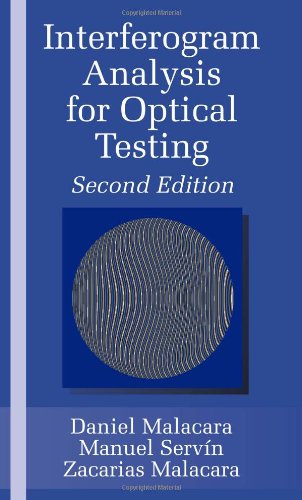

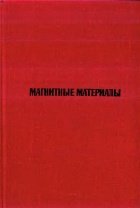
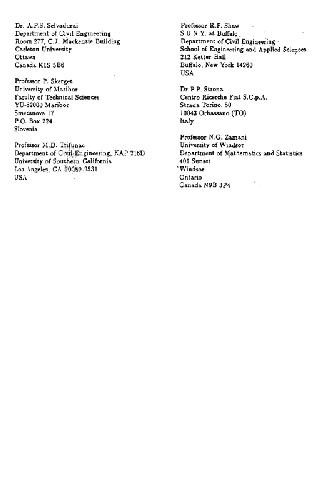
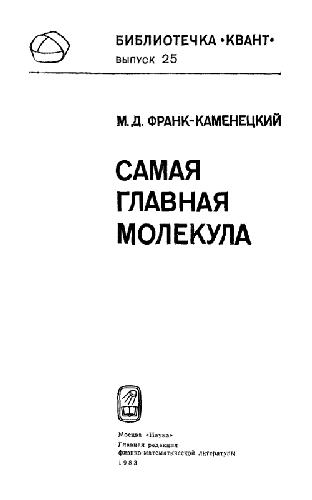
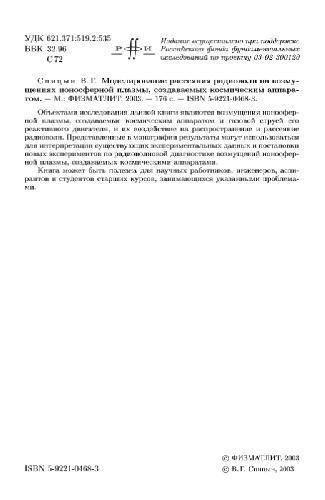
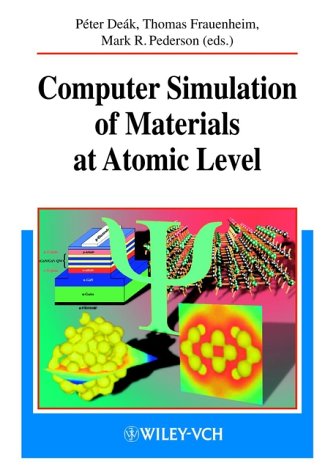
Reviews
There are no reviews yet.